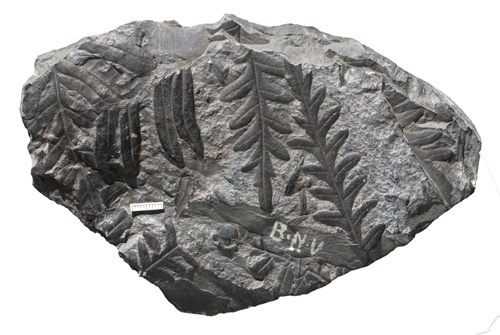University home > Centenary > Look > Cabinet of Curiosities > Coal Measures plants
Coal Measures plants
Department of Earth Sciences’ Geology Museum

The beautifully-preserved leaves and stems of fossil plants abound in the shale beds between the coal seams of the Bristol and Somerset coalfields. They provide a glimpse of the rich vegetation of the area during late Carboniferous times. Although hard to imagine today, Bristol became an important coal-mining area in the late nineteenth century with annual production reaching 1.5 million tons by 1920. The industry declined after 1945, with the last mine in the region (Kilmersdon, near Radstock) closing in 1973. Fossil plants could be readily collected from the tips; this specimen came from the “New Vein” at Braysdown Colliery near Radstock, and was collected by L.R. Moore.
- Item reference: BRSUG 2548 Alethopteris
- Photographer: Simon Powell
- Copyright: Department of Earth Sciences, University of Bristol
- This image is licensed for some educational use only. Users must abide by these terms and conditions.
